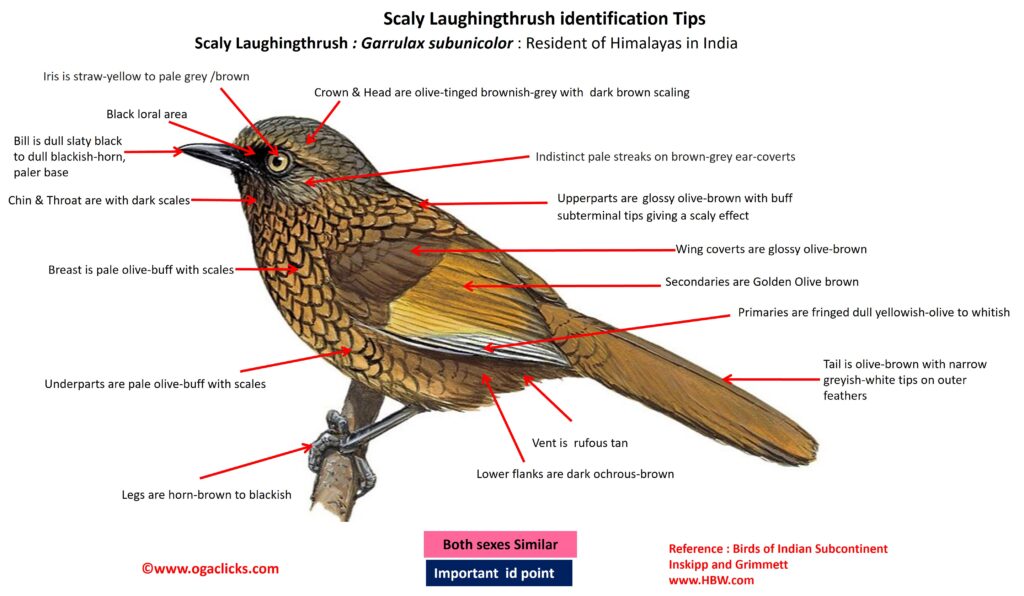
Scaly Laughingthrush Trochalopteron subunicolor
Etymology:
- Trochalopteron : Greek word trokhalos – round, bowed; pteron -wing
- Subunicolor: Latin word sub – underneath, somewhat; unicolor -uniform.
Distribution: Resident of Arunachal Pradesh
Description : Size of 23–25·5 cm; wt. of 50–76 g. It is a medium-sized short-billed dull laughingthrush with heavy dark scaling, yellowish wingpanel. The nominate race has sooty lores, head is olive-tinged brownish-grey with slight dark brown scaling (especially on superciliary area), and indistinct pale streaks on ear-coverts. The scaling becomes heavier and extensively covers almost entire body plumage. It is slightly glossy olive-brown above with buff terminal tips, and pale olive-buff below, especially on belly (where scaling is least), with dark ochrous-brown lower flanks, thighs and vent. The primary coverts are slightly glossy olive-brown, outer fringes of secondaries are paler, outer fringes of primaries are dull yellowish-olive to whitish. The tail is olive-brown with narrow greyish-white tips on outer feathers. The iris is straw-yellow to pale grey, sometimes brown. The bill is black or blackish-brown; legs are horn-brown to blackish. Both the sexes are similar. The juvenile has upperparts and breast warmer than adult, with less distinct scaling, and whitish tail tips smaller.
Habitat: It is found in broadleaf evergreen forest with thick undergrowth, secondary growth, bramble thickets and dwarf rhododendron, bamboo. It is found from 1500 m –3960 m in breeding and recorded at 800 m during harsh winter weather.
Food habits: It eats Insects, like beetles and grasshoppers and centipedes, snails and berries, figs (Ficus), and flowers of Rhododendron . It is found in pairs, or in parties of up to ten individuals outside breeding season. It forages on or near ground.
Breeding habits: They breed in Apr–Aug. The nest is a cup made of grasses and moss, lined with soft bamboo leaves, placed above ground in bush or sapling. They lay a clutch of 3–4 eggs